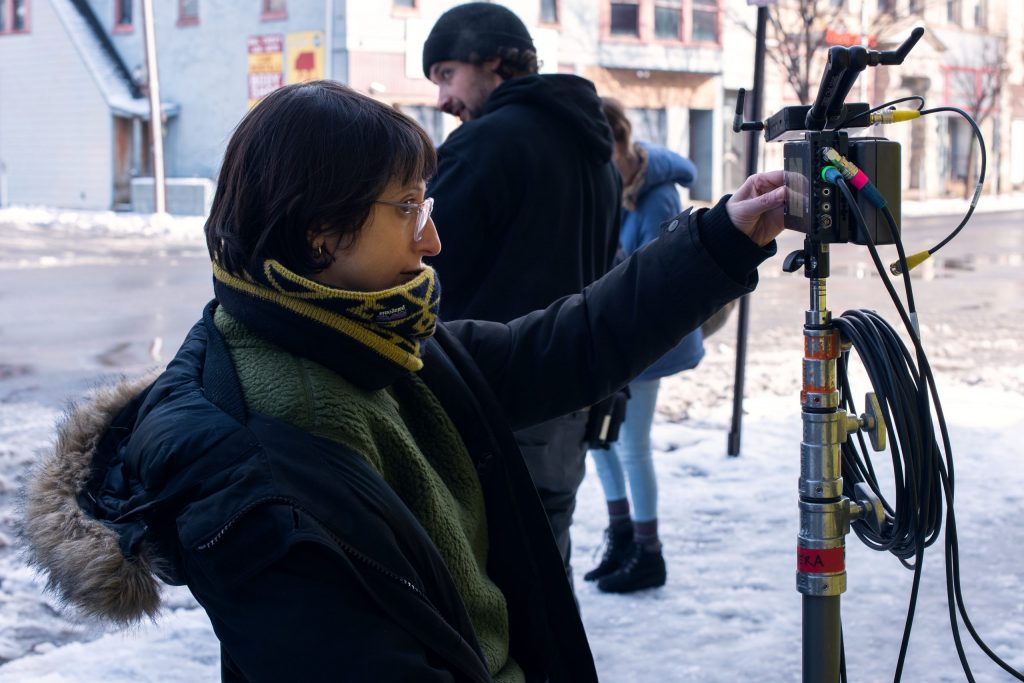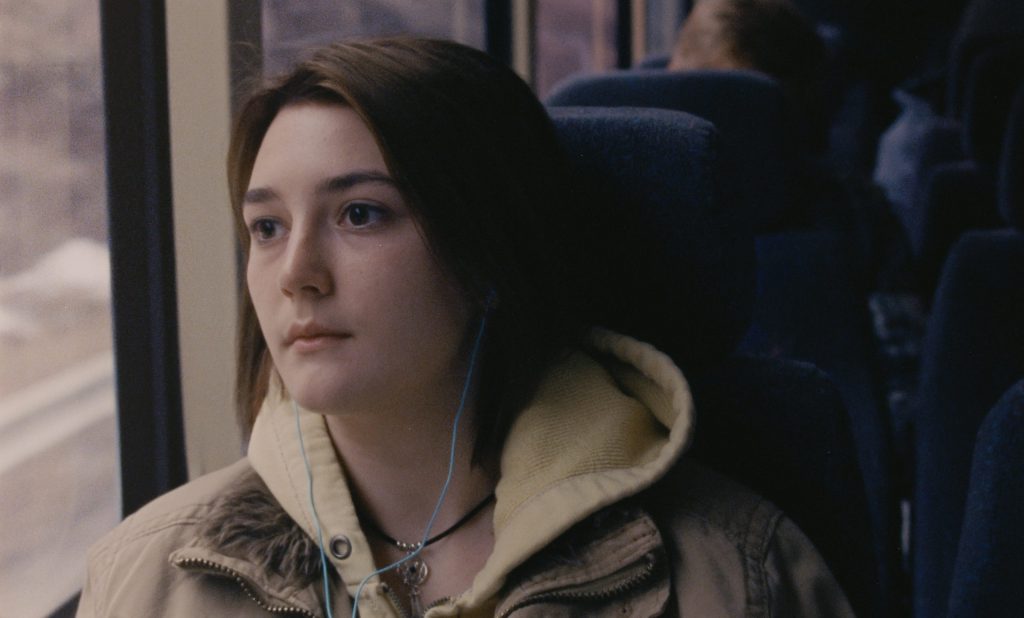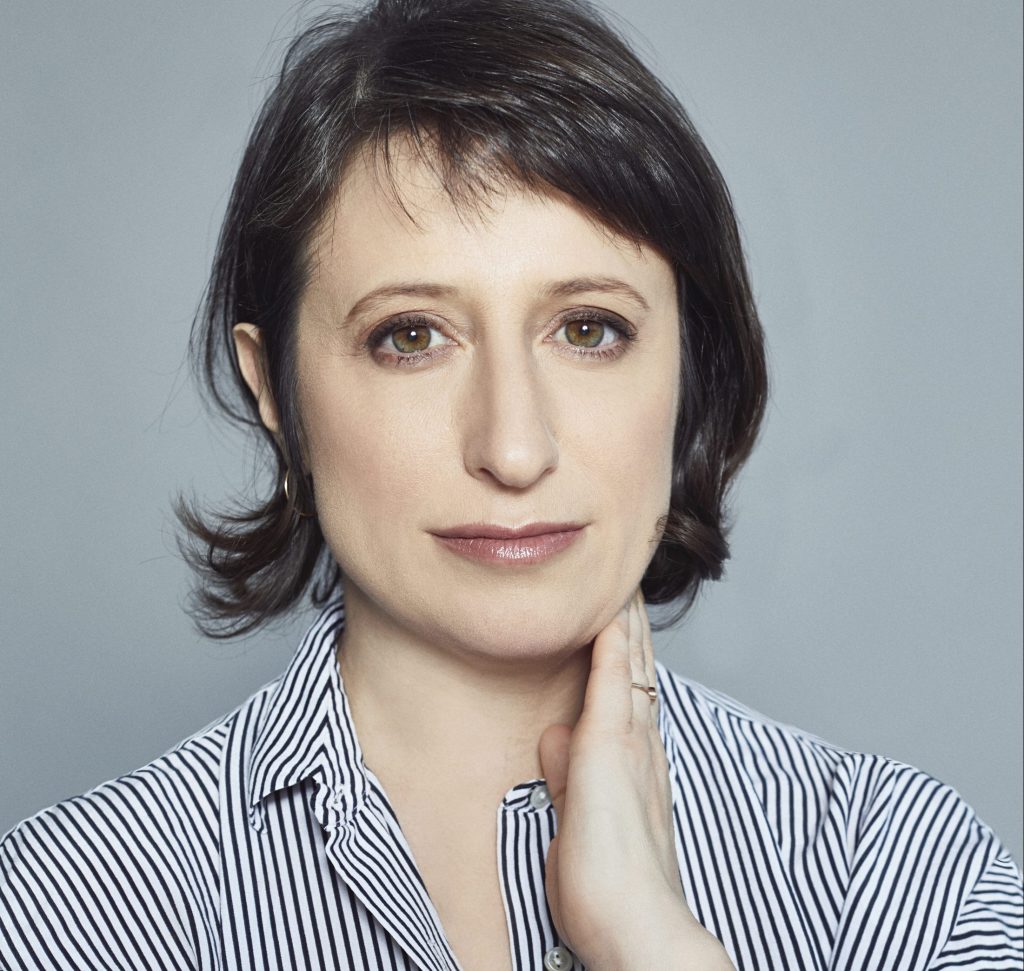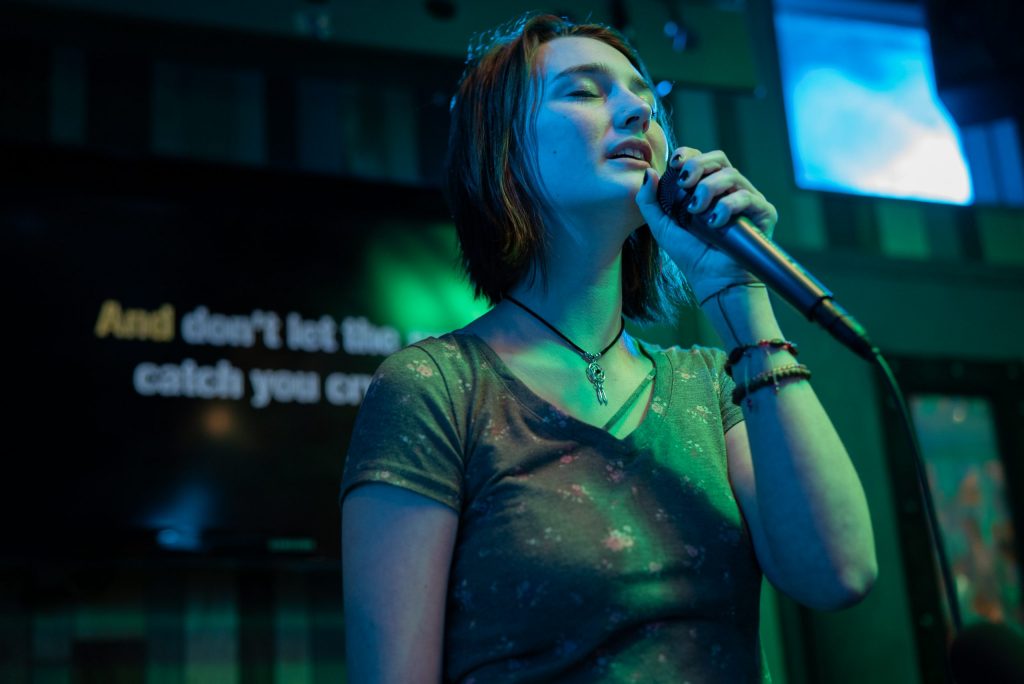FRONTRUNNER Meets Filmmaker Eliza Hittman

When a story like Eliza Hittman’s Never, Rarely, Sometimes, Always hits us, it hits us hard. The film is starting conversations that were hesitantly addressed, before. Never, Rarely, Sometimes, Always is Hittman’s third feature film, telling the intimate story of a teenage girl who is forced to travel from rural Pennsylvania to New York City to access a right that is otherwise denied at home: an abortion without parental consent. Hittman invites the audience on a rollercoaster of female vulnerability, discomfort, and a private journey to reclaim one’s identity through exhausting efforts that are repeatedly neglected and treated with secrecy. The film premiered at the Sundance Film Festival in January and won the Silver Bear Grand Jury Prize at the Berlinale.
A New York-based screenwriter, director and producer, Hittman is known for her films It Felt Like Love (2013) and Beach Rats (2017) – winner of the Directing Award: Dramatic at Sundance, and is the recipient of a Guggenheim Fellowship for Creative Arts (2018).
FRONTRUNNER spoke to Hittman to find out more about the story of Never, Rarely, Sometimes, Always and the process of establishing herself as an independent female film director.

Photo credit: Angal Field/Focus Features
Congratulations on Never, Rarely, Sometimes, Always. It’s beautiful and a crucial story to tell. Where do you get inspiration from and a drive for these stories?
Each idea comes from a different place. Never, Rarely, Sometimes, Always was a film that I started to think about in 2012. The genesis of the project was a newspaper where I read about the death of Savita Halappanavar in Ireland, a dentist who died after being denied a life-saving abortion. I began reading about what’s insensitively called abortion tourism and women who travel. I was thinking about the journey specifically from Ireland to London and how many women take that trip in a day when they need an abortion across the Irish Sea. I saw a film in it. It is this hero’s journey, but it’s a story that no one has told because it’s shrouded in shame and secrecy. I started to think about the burden of obstacles that come along with taking such a journey.
It’s Sidney Flanigan’s (who plays the lead character, Autumn) first acting role. How do you find your cast members and how do you have the confidence when they are maybe a bit greener than most actors?
Casting is a learning process for me as a director, and sometimes I go into it knowing the film, but then making lot of discoveries along the way. When we started casting, a lot of the young actresses we saw were talented and competent, but I started to realize what the film needed. A lot of the women we saw initially felt “too LA” or “New York”, and maybe were too wispy. For the story to be effective, we needed to feel that the character -even though something mysterious and bad might have happened – was not, herself, a victim. She is the victim of something, but as a human being, she has the strength to take this journey.
It’s a very long story how I met Sidney, but I was making another film with my partner, Scott Cummings (an editor) and it was a performative documentary set in Western New York, in South Buffalo. I met Sidney while we were casting that movie four or five years ago. We were collecting people to be in this other film and through meeting people added Sidney on Facebook. She was always on my Facebook feed, posting videos of her playing music, covers of punk songs, and I thought they were compelling. The songs captured something true to being a teenager; they had this rawness and anger, but also hope. I was looking for somebody where you could feel the strength that she could take this trip, but also the vulnerability. That comes from her and those were a hard combination to find, somebody who could bring those qualities innately to the screen.

Never, Rarely, Sometimes, Always (2020)
Dir. Eliza Hittman
Photo credit: Courtesy of Focus Features
For Beach Rats or It Felt Like Love, did the actors find you or do you pay particular attention to look for and coming actors?
I take a big risk in how I cast a film. It’s important to bring an audience into a world that is unfamiliar, new, compelling, and into a story that they haven’t seen before. It’s not a priority for me to make a discovery as a director, but it is a priority to find the actor who will bring the greatest depth to the role. I trust my intuition. I take a lot of time to audition actors and the way I audition people is unconventional.
Sidney came to New York to audition and I took her into the city. I didn’t want her in an audition room surrounded by producers and a casting director, because I knew that would make her nervous; it always changes the energy of the room. The performance that I’m looking for is intimate. It is hard to create that intimacy in an audition with people standing around judging and forming opinions. I took Sidney into the city with my cinematographer, Hélène Louvart, and we got on the subway. We started shooting her, navigating New York, buying a MetroCard, all of these little moments that accumulate throughout the film. We shot her at [a] Chinese bakery buying pastries, then we did more scene work, and I edited everything and sent it to producers and our financiers.
That’s more interesting for producers than just tape after tape.
Tape after tape, that’s very two-dimensional. I believe in creating a more three-dimensional audition. It’s about how…it feels to work together.
The themes in your films circulate around peer pressure and social issues. Do these ideas come from real-life experiences, documentaries, personal experiences or is it just something you feel passionately about?
I collect moments and have an archive of small moments that are interesting or that made me uncomfortable and I tend to weave those moments through a narrative. Nothing is autobiographical. There is always this expectation around women to make more diaristic work and none of the films are, in reality. They are inspired by my life, but none of them are my life story.
You submerge your audience into these stories and your characters’ vulnerability and you let them see the problems through their eyes. How do you deliver the characters’ internal crisis so effectively to the external world?
When I’m constructing a narrative or writing a script I am always thinking about how to immerse the audience into the character’s subjective experience and it is about giving them private access. They are like peep shows. I’m letting the audience into these private experiences that these characters have, and they always know more than everyone else. I engage an audience through tension and also by permitting them to look inside a character’s life.

Never, Rarely, Sometimes, Always (2020)
Dir. Eliza Hittman
Photo credit: Courtesy of Focus Features
Not necessarily through dialogue, but with silence and actions.
I am always trying to make sure the audience understands what the character is thinking and feeling and dropping them into their subjective point of view. They are very first person.
The titular scene in Never, Rarely, Sometimes, Always, is the most heartbreaking scene in the film. This is where the audience might realize that people usually only see the physical pregnancy, and not what’s in the background. How did you build up this scene?
I knew when I was writing the script that she was carrying a dark story and when it would bleed out of her was a question of how. In my research process, I spent a lot of time consulting with different clinics, and the part of the test where we learn more about her is called the intimate partner violence questionnaire. There was something about talking to the social worker of that test and how it opens up personal, romantic, sexual, and family history. I knew in the research that was a moment to explore, revealing more about her. I workshopped that scene a lot with the social worker, and then I ended up casting the social worker. It makes the scene more effective because Sidney is a first-time actor and she is making herself vulnerable, the most vulnerable she has been on set, but she is in the hands of a professional social worker who is creating space and holding that space for her.
Such subjects may be considered quite difficult and sensitive. How do you find the right people to work with to have mutual trust, respect, and the common motive to achieve the same goal?
When you begin meeting and interviewing people you see if they share the like-mindedness and vision for the film. It took a while to find the right cinematographer. I have made short films, worked with different cinematographers, and with Hélène and my editor we have a natural collaboration. I have this incredible DP in production and this incredible editor and we are usually the most aligned through the process. Hélène is always looking at people and I’m interested in casting and so is Scott. The challenge of the film industry is you don’t always get to hold onto people because of schedules and careers go in different directions, but those are the two people I will try to hang on to. They are most connected in the deepest way to my sensibility.
It is important to have people around you who with even closed eyes you can trust. Especially when telling these stories.
Yes. Hélène and I shoot intimately and you need a cinematographer who also creates a safe space for a performance and she does that. She is looking through the lens and she is connected to the actors and the performance. Sometimes we are in small spaces and I can’t be in the room and I have to have an incredible amount of trust.
As a female director, do you find it more difficult to establish yourself in the industry? Do you have to go the extra mile as opposed to male directors?
Sexism is everywhere, even on your own set. In terms of career building, I think of myself as an outlier. My first feature was a micro-budget movie and no one was interested in making it. It took a long time to get an agent and a manager, nothing happened overnight. There were a lot of steps and I continued to work with and build a community of people who respect my sensibility and are willing to support what I am doing.

Photo credit: Victoria Stevens
For independent filmmakers who are trying to establish themselves, do you have a recipe for how to break this struggle or how not to give up hope?
I can only speak about what worked for me because there is no one path. I wrote It Felt Like Love with a practical approach. I wrote it around locations that I could access, knowing that I was going to gather kids together in the summer when they are out of school. It’s shot on the fringes of New York City where nobody bothered us and I made it with a crew of five or six people. I wrote a script with the intention and plan to execute it by myself. I felt like if I build it, they will come and it worked. I felt like if I could shoot the film for little money then I could find money to finish it. As soon as I made a cut of the film and got investors to help us pay back what we owed and finish the movie. I didn’t write a million-dollar script. I wrote a script I knew I could make from $100,000. I raised a DIY, micro-budget approach, and it gave me total control. There was no other influence over how it was made and the content. Finding a space where you can make something that is completely yours first.

Never, Rarely, Sometimes, Always (2020)
Dir. Eliza Hittman
Photo credit: Angal Field/Focus Features
Your films have a rawness and honesty to it. Perhaps Ken Loach comes to mind who works with similar ideas and techniques. Who influences you?
There is a Ken Loach influence over the film, except I’m not telling the story as subjectively as he is. I re-watched Ladybird, Ladybird (1994) and Sweet Sixteen (2002) because his process is so impressive. I was inspired by some of the Romanian New Wave, and I always go back to Lynne Ramsay’s early work. I was thinking about A Man Escaped, as it’s about the story of a character trying to escape. It is a process-oriented narrative and it’s about watching the physical and tactile steps that he takes to find freedom and you don’t know what will happen to him when he runs away from the prison, but for a moment we feel a sense of exhilaration and relief. I was thinking about that journey for the film.
It’s great when you meet people who watched your films even in the industry because your audience seems to look beyond the surface. They bring people together who share like-mindedness. Is this something you create consciously, to start conversations?
I live far from the industry. I’m in New York. I work as a full-time professor and I never feel like I’m in that system. It’s always surprising to me when people say, “We’ve watched Beach Rats”. I have made three films and my audience continues to grow and to expand. I still feel far from Hollywood.
Is there anything new on the horizon?
Not at the moment, I’m still in the trenches with Never, Rarely, Sometimes, Always. In a month I will be done teaching and I will have space. Right now, my plate is full.
What is on your “hidden gems” film list?
I haven’t been watching much in quarantine, but I am excited to watch My Brilliant Friend, the HBO adaptation of Elena Ferrante’s novel. I have a list of friends’ movies I have to catch up on.
Never, Rarely, Sometimes, Always is now available to watch here.